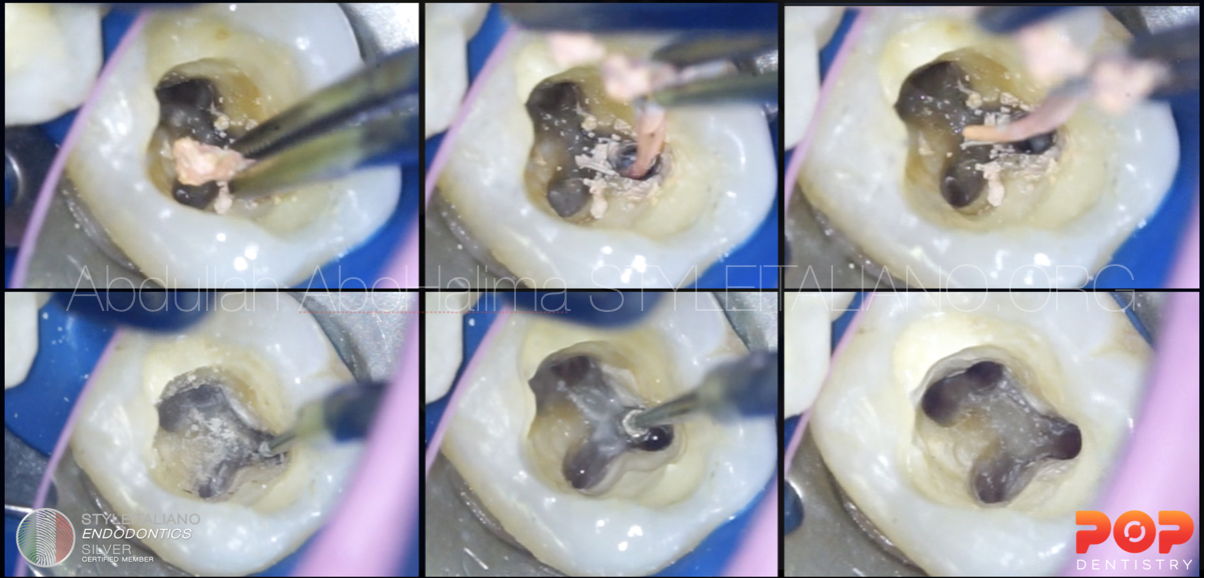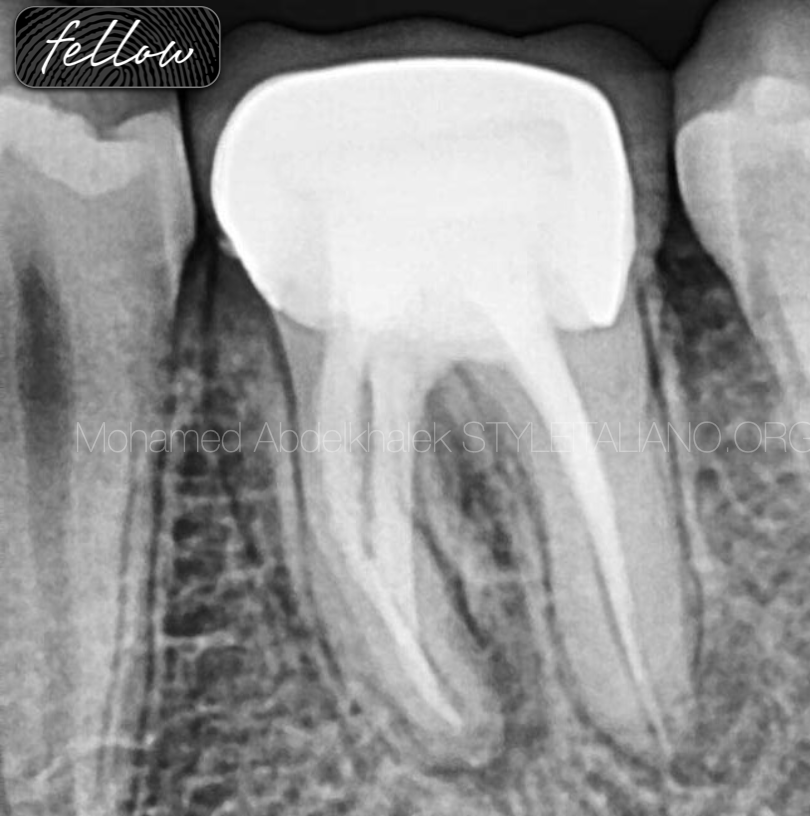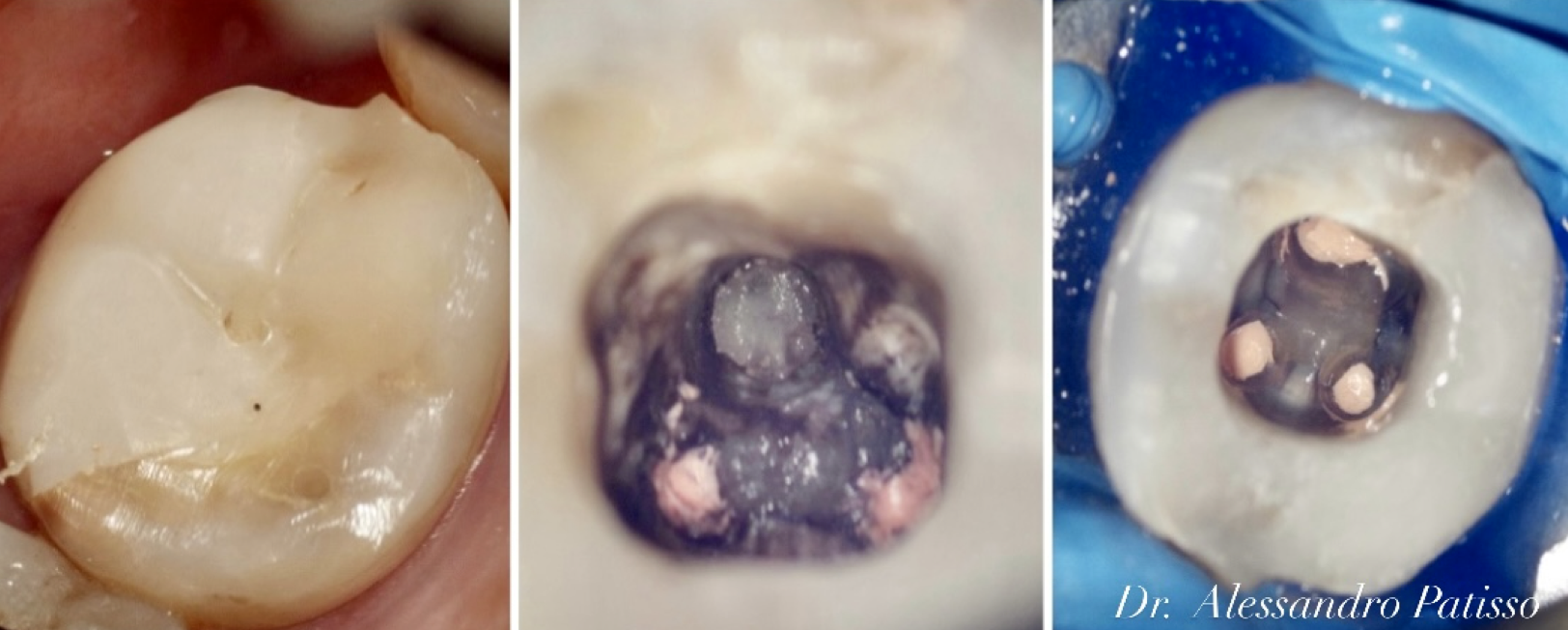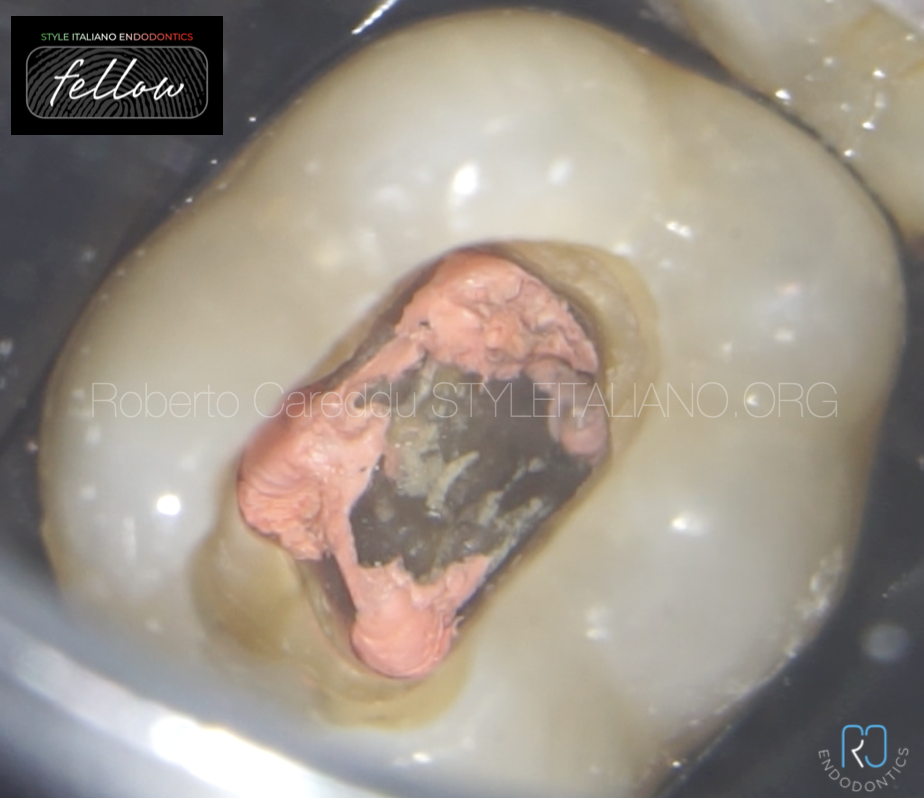
Removing Gutta during retreatments: better using solvents from the start?
02/12/2023
Fellow
Warning: Undefined variable $post in /var/www/vhosts/styleitaliano-endodontics.org/endodontics.styleitaliano.org/wp-content/plugins/oxygen/component-framework/components/classes/code-block.class.php(133) : eval()'d code on line 2
Warning: Attempt to read property "ID" on null in /var/www/vhosts/styleitaliano-endodontics.org/endodontics.styleitaliano.org/wp-content/plugins/oxygen/component-framework/components/classes/code-block.class.php(133) : eval()'d code on line 2
Non-surgical retreatment often represents the best approach for addressing a failed root canal treatment. The effective removal of the root filling material, cement, and gutta-percha is one of the key points for success, as it allows for the proper cleaning of the root canal system.
While the use of solvents helps to remove the filling material from the canals, they have drawbacks such as cytotoxicity and the potential for apical transportation due to the softening of the hard tissues. Additionally, they may increase the time needed to complete the retreatment, as plasticized gutta-percha may be more challenging to remove.
Traditionally, the use of solvents has been recommended from the early phases of the retreatment, with the aim of softening the gutta-percha to allow for file penetration. The use of rotary instruments helps to reduce the reliance on solvents; however, the friction of the file on the gutta-percha may pack residual material into less accessible areas of the canal.
The use of a combination of rotary and hand-dedicated instruments to remove the gutta-percha represents a viable way to extract as much gutta-percha as possible, minimizing its presence before resorting to solvents. The advantage of mechanically removing "chunks" of gutta-percha cones lies in the fact that with less gutta-percha to "melt," the cleaning of the canal is expedited. Solvents can then be employed as a "final touch" to eliminate any remaining material, and agitation can be used to ensure more effective cleaning action. Studies on the agitation of solvents have indicated a slight increase in material removal, although it does not appear to play a pivotal role in overall success.
One way to verify the presence of remaining gutta-percha in the canal is to dry the canal after repreparation and solvent use, and then use a paper point soaked in solvent to check for any lingering traces of gutta-percha.
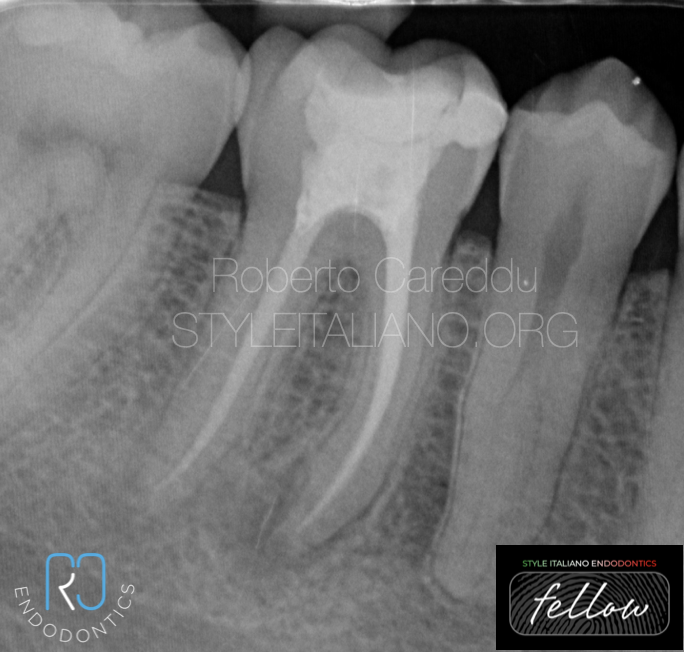
Fig. 1
Patient referred for retreatment of a lower first right molar root treated 2 years before that recently became symptomatic.
The periapical x-ray showed the presence of apical periodontitis on both mesial and distal roots
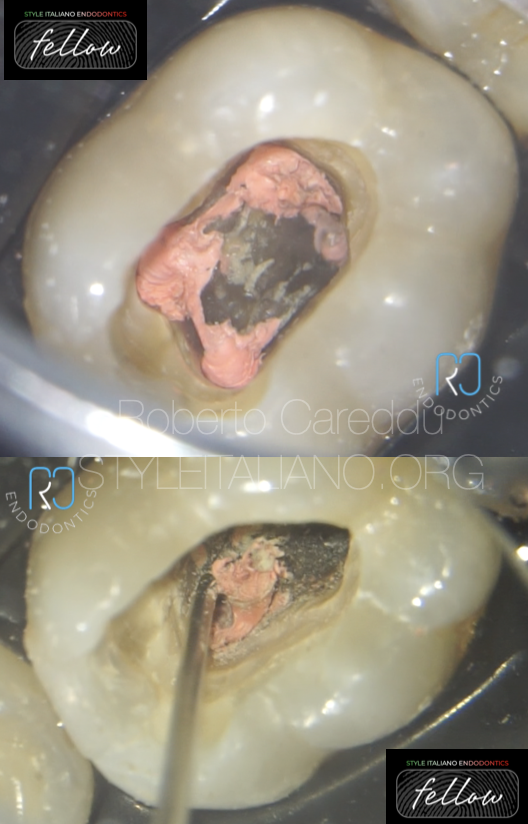
Fig. 2
The initial removal of the guttapercha present in the pulp chamber and canals is done with dedicated hand instruments (eg. Deppeler mini X1-X2).
This process has a few advantages:
- The removal of “chunks” of GP leaves less material that could potentially ”melt” when using solvents or with the heath produced by the friction of the rotary files, making the retreatment more difficult
- If a master-cone technique was used, or if the GP was not well compacted, often is possible to remove the whole obturation in this way. This is an ideal situation as it speeds up considerably the treatment’s time.
In the video, it is showed how the GP is removed from the canals using dedicated hand instruments.
After an initial removal, the use of a very small amount of solvent and NiTi Rotary files is recommended to remove completely the previous obturation material.
Before the re-shaping a quick activation of the solvent through sonic agitation was performed.
After the re-shaping of the root canal system, a GP point soaked in solvent was introduced in the dried canal. In this way it was possible to better evaluate the presence of residuals, as if some gutta was still present it would most likely leave a stain on the paper point.
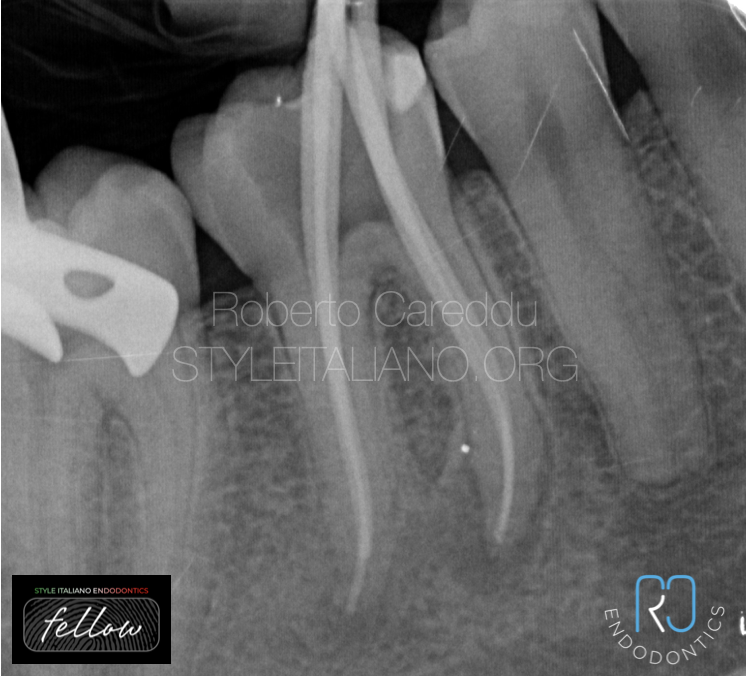
Fig. 3
After the reshaping, an xray with the mastercones was taken.

Fig. 4
In this case I elected to seal the root canal system with HCSC and guttapercha shortening a bit the mastercone in order to close the apex with cement. An PA- xray was taken to confirm the proper seal of the four canals.
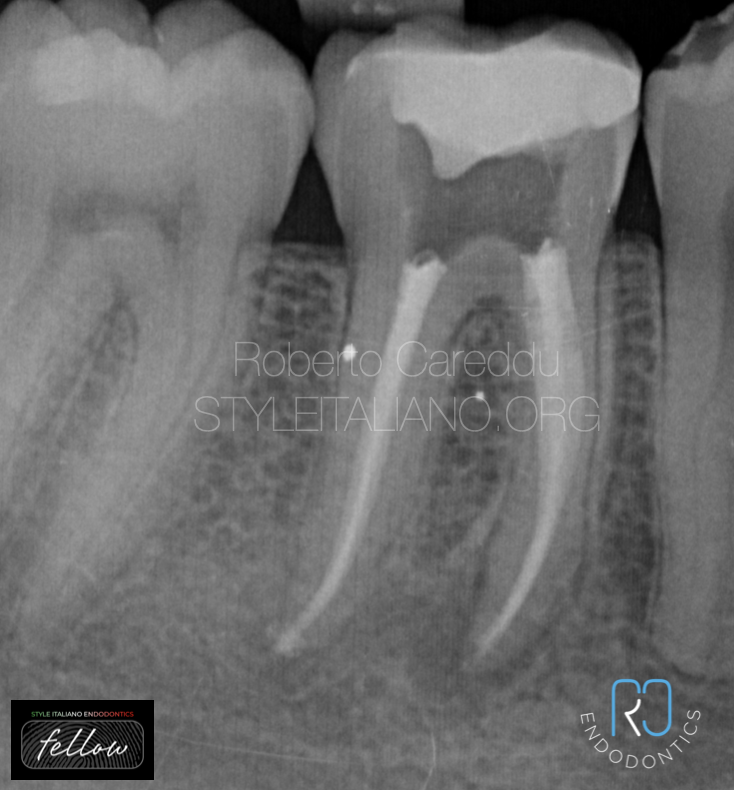
Fig. 5
The tooth was then temporised with PFTE and GI and sent back to the referring dentist for permanent restoration.

Fig. 6
About the author:
Dr Roberto Careddu
I was born in Sardinia (Italy) and I graduated with Honors from the University of Cagliari (Italy). My endodontic journey started with a Master in Clinical Endodontics and continued with courses and univeristy programs in different countries. I recently completed my PhD at Trinity College of Dublin.
I live in Dublin, where I work as Endodontist in private practice and I am Clinical Supervisor in the Dublin Dental University Hospital.
I have authored scientific articles and I serve as an international conference speaker.
I am Member of the Faculty of Dental Surgery of the Royal College of Surgeons of Ireland, Member of the Committee of the Irish Endodontic Society (IES) and the Irish representing for the European Society of Endodontology (ESE).
Conclusions
The use of solvent it is for sure a valuable aid during retreatments, however avoiding its use since the first stages of the procedure may result in a quicker and more efficient guttapercha removal.
Dedicated hand devices designed for guttapercha removal may represent a reliable way to remove the bulk of obturation material and what is left after the use of NiTi files.
Bibliography
Vajrabhaya, L. O., Suwannawong, S. K., Kamolroongwarakul, R., & Pewklieng, L. (2004). Cytotoxicity evaluation of gutta-percha solvents: Chloroform and GP-Solvent (limonene). Oral surgery, oral medicine, oral pathology, oral radiology, and endodontics, 98(6), 756–759.
Karataş, E., Kol, E., Bayrakdar, İ. Ş., & Arslan, H. (2016). The effect of chloroform, orange oil and eucalyptol on root canal transportation in endodontic retreatment. Australian endodontic journal : the journal of the Australian Society of
Endodontology Inc, 42(1), 37–40.
Ferreira I, Pina-Vaz I. The Novel Role of Solvents in Non-Surgical Endodontic Retreatment. Applied Sciences. 2022; 12(11):5492. https://doi.org/10.3390/app12115492
Martos, J.; Bassotto, A.P.; Gonzalez-Rodriguez, M.P.; Ferrer-Luque, C.M. Dissolving efficacy of eucalyptus and orange oil, xylol and chloroform solvents on different root canal sealers. Int. Endod. J. 2011, 44, 1024–1028


